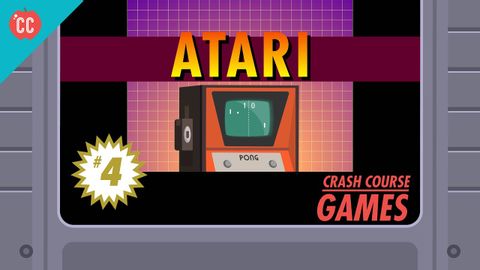雅達利和電子遊戲業務。Crash Course Games #4 (Atari and the Business of Video Games: Crash Course Games #4)
Jack 發佈於 2021 年 01 月 14 日  沒有此條件下的單字
沒有此條件下的單字US /ˈvɚʒən, -ʃən/
・
UK /ˈvə:ʃən/
- n.版本;形式;(某物的)版;版本;(軟體的)版本;說法
US /ˈkʌmpəni/
・
UK /'kʌmpənɪ/
- n. (c./u.)某人的陪伴;公司;家中的客人;有人陪伴;連;劇團
US /ˈɪndəstri/
・
UK /'ɪndəstrɪ/
- n. (c./u.)(停車場等)空間;(可使用的)空間;宇宙,太空;空格,字距
- v.t.留出空白,留間隔

